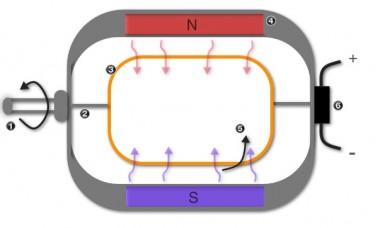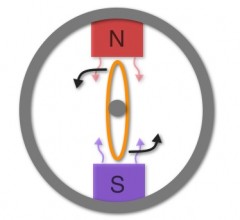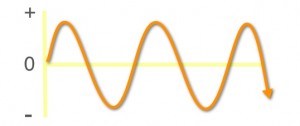How a Generator Works
A generator is a device that converts mechanical energy into electrical energy. Generators do not produce electricity on their own, they must first collect mechanical energy from an outside source. How a generator works is easy to understand if you can understand each step below.
Common sources used to supply a generator with mechanical energy are:
- Wind
- Falling liquid water
- High pressure steam.
The fuels used to supply these forces are:
- The sun
- Wind
- Oceans, rivers, and lakes
- Coal
- Oil, and natural gas
- Nuclear power
- An internal combustion engine.
Below is a simplified example of how a generator works:
The generator pictured above is a small and cylindrical turbine generator with an outer casing made of steel.
As stated before, the mechanical energy needed to make the generator work can come from several different forces. Each different force will eventually create a rotating force within the turbine generator. Let’s take a step-by-step look out how a generator works using the diagram above:
(1) Point 1, from the figure above, is a spinning rotor that is attached to the turbine shaft. The main job of the rotor is to absorb the mechanical energy outside the generator, and use it to create rotational motion. The rotor in a turbine generator could be attached to a set of wind turbine blades, a set of reaction or impulse steam turbine blades, hydro-turbine blades, or a gas engine.
(2) The turbine shaft will begin to rotate with the rotor, causing all of the inner workings of the machine to rotate as well.
(3) Attached to the turbine shaft is a coil of copper wire that rotates at the same speed as the turbine shaft and is often referred to as an armature.
(4) On either side of the armature, on the casing of the generator, we have two polar field magnets that create a magnetic field inside the space within the generator. As the rotor, shaft, and armature rotate, they move within the electric field created by the magnets.
The picture below shows the same generator from a different point of view, as if you were looking lengthwise, down through the circular top of the turbine cylinder. More easily seen from this view, the armature rotates within the generator, with each end moving opposite the other. As one end rotates upward through the magnetic field, the opposite side will be rotating downward, and eventually in a complete circle that is repeated many times.
(5) As the turbine rotates the armature through the magnetic field, an electrical current is created within the copper coil of the armature.
The current is created due to a law of electromagnetism called Faraday’s Law of Induction, discovered in the 1800’s. This law states that a wire conductor that creates movement through a magnetic field creates an electric current, and that the strength of the current is equal to the rate of change through the magnetic field. So, the faster the copper coil rotates, the more electric current will be created.
(6) Finally, the electricity produced can be extracted from the generator. The method of retrieving the electrical energy depends on how it will be used.
Note: in this particular case, we get electric energy produced from two different directions (as one coil is spinning up, the other is rotating downward) so the electrical output comes as an alternating current.
In the figure below we see a graphical representation of an an alternating current, where the electrical charge travels back and forth repeatedly between and positive and negative charge:
The information above is a brief overview of how a generator works. The turbine inside the generator rotates from an source of mechanical energy, which causes the copper coil to rotate within a magnetic field, which produces an electric current. Follow the links to apply your knowledge of how a turbine generator works using each of these forces: Wind Energy, Solar Energy, Hydro Energy, Steam Energy.


